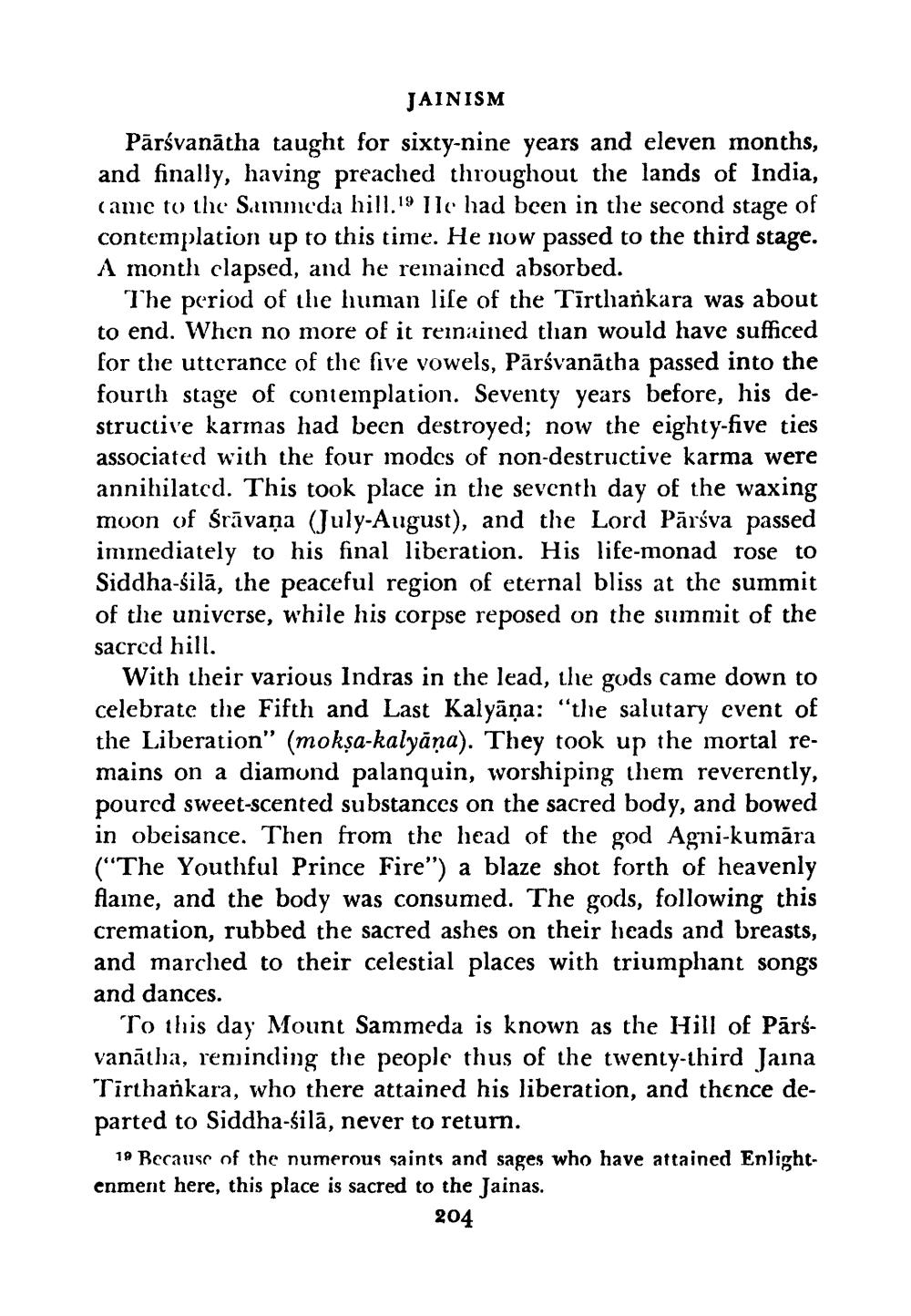________________
JAINISM
Pārsvanatha taught for sixty-nine years and eleven months, and finally, having preached throughout the lands of India, came to the Sammeda hill.19 He had been in the second stage of contemplation up to this time. He now passed to the third stage. A month clapsed, and he remained absorbed.
The period of the human life of the Tirthankara was about to end. When no more of it remained than would have sufficed for the utterance of the five vowels, Pārśvanātha passed into the fourth stage of contemplation. Seventy years before, his destructive karmas had been destroyed; now the eighty-five ties associated with the four modes of non-destructive karma were annihilated. This took place in the seventh day of the waxing moon of Śrāvana (July-August), and the Lord Parsva passed immediately to his final liberation. His life-monad rose to Siddha-sila, the peaceful region of eternal bliss at the summit of the universe, while his corpse reposed on the summit of the sacred hill.
With their various Indras in the lead, the gods came down to celebrate the Fifth and Last Kalyāņa: "the salutary event of the Liberation" (mokṣa-kalyāṇa). They took up the mortal remains on a diamond palanquin, worshiping them reverently, poured sweet-scented substances on the sacred body, and bowed in obeisance. Then from the head of the god Agni-kumāra ("The Youthful Prince Fire") a blaze shot forth of heavenly flame, and the body was consumed. The gods, following this cremation, rubbed the sacred ashes on their heads and breasts, and marched to their celestial places with triumphant songs
and dances.
To this day Mount Sammeda is known as the Hill of Pārsvanatha, reminding the people thus of the twenty-third Jaina Tirthankara, who there attained his liberation, and thence departed to Siddha-śilā, never to return.
19 Because of the numerous saints and sages who have attained Enlightenment here, this place is sacred to the Jainas.
204




